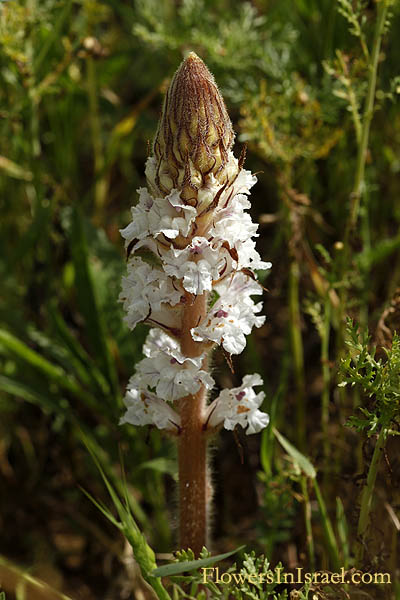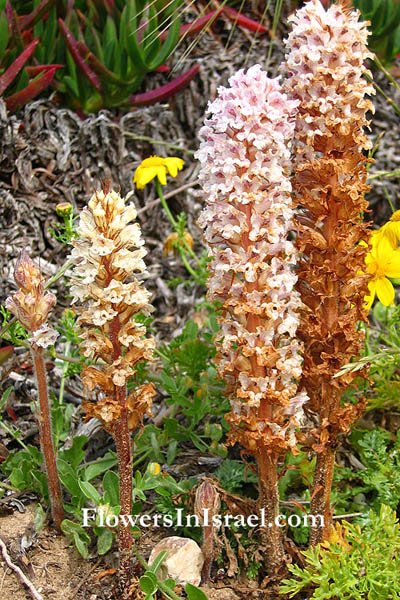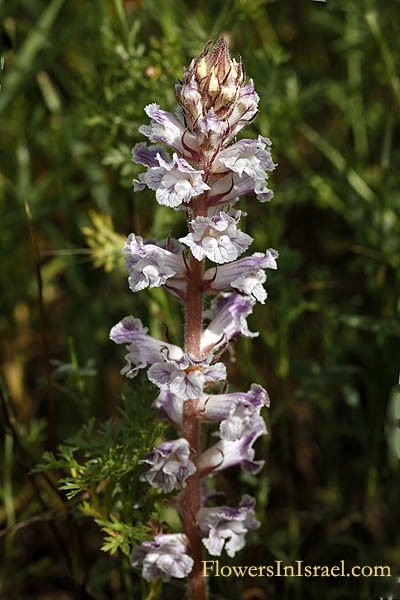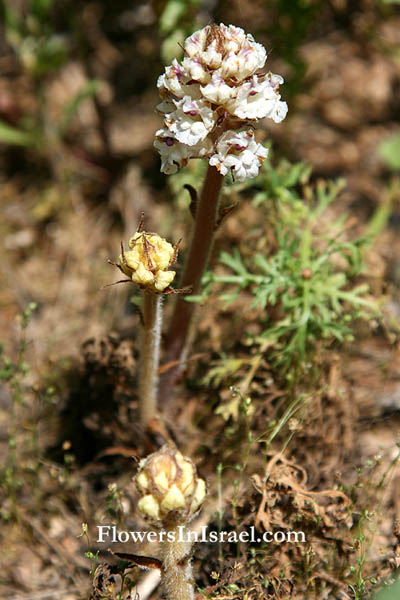Hebrew: עלקת חרוקה, Arabic: جعفيل مفرّض, Egypt: هالوك ميتابي "Halouk Metabi", "Diker El Foul"
| Scientific name: | Orobanche crenata Forssk. | |
| Common name: | Scalloped Broomrape | |
| Hebrew name: | עלקת חרוקה | |
| Arabic name: | جعفيل مفرّض | |
| Egypt: | هالوك ميتابي "Halouk Metabi", "Diker El Foul" | |
| Family: | Orobanchaceae, עלקתיים |

|
| Life form: | Parasite | |
| Leaves: | Alternate, scale | |
| Flowers: | Pink, white, yellow | |
| Flowering Period: | February, March, April, May | |
| Habitat: | Cultivated areas | |
| Distribution: | Mediterranean Woodlands and Shrublands, Semi-steppe shrublands | |
| Chorotype: | Med - Irano-Turanian | |
| Summer shedding: | Ephemeral |

Derivation of the botanical name: Orobanche, Greek orobos, a kind of vetch; anchone, choke, strangle; this was the Greek name of a plant that was parasitic on vetch. crenata, Latin crena, notch; atus, ata, adjectival suffix for nouns:likeness of something; notched. broomrape, broom + rape, part translation of species name Orobanche rapum-genistae, where Latin rapum actually means turnip, not rape. Broomrape, any of various plants, of the genus Orobanche, that are parasitic on the roots of other plants. The Hebrew name: Alkat, עלקת, is derived from the name of the parasitic animal leech, עלוקה, aluka.

Location: Bene Zion Nature Reserve 
|